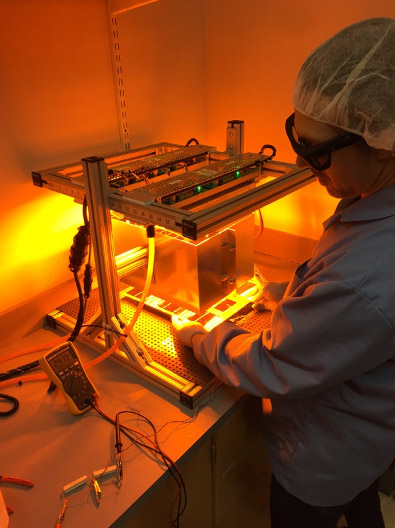When asked how you get to Vandenberg Air Force Base, Boston University’s Brian Walsh and his Goddard Space Flight Center (GSFC) co-investigators are likely to reply “Practice, Practice, Practice” and “Teamwork, Teamwork, Teamwork.” They’ve been at this business for quite a while.
It all started in 2005, when GSFC astrophysicist Scott Porter told GSFC heliophysicist Michael Collier about a soft X-ray foreground signal coming from the vicinity of the Earth that astrophysicists were struggling to remove. The signal was interfering with their efforts to image distant stars and galaxies. Michael’s eyes widened in surprise – he immediately realized that heliophysicists could use this ‘unwanted’ signal. This soft X-ray signal was produced when solar wind ions collided with atoms in the Earth’s outer atmosphere, exchanging electrons. By carefully imaging it, they could paint the outline of the invisible magnetic bubble, or magnetosphere, surrounding Earth that shields us from the oncoming solar wind.
Colleagues at the University of Kansas ran simulations to calculate the strength of the X-ray signals, while Scott and Michael set out to find the right technology for the task. Working with partners at the University of Leicester in the United Kingdom, they realized that so-called ‘Lobster-eye’ optics could do the trick (see Figure 2). These special cameras could take wide field-of-view pictures of the X-rays.


Fast forward to the Decembers of 2012 and 2015, and Scott, Michael, and GSFC Post-Doc Brian Walsh are launching prototype ‘Lobster-eye’ telescopes on the DXL-I and DXL-II rocket flights from White Sands, New Mexico. It was near midnight on December 12, 2012. A few hundred feet away, the DXL sounding rocket had just lifted off from White Sands Missile Range carrying, as a secondary payload, the Sheath Transport Observer for the Redistribution of Mass or STORM instrument, the first wide field-of-view soft X-ray imager ever launched into space.
Michael remembers sitting hunched over a terminal, his index finger hovering nervously over the ‘self-destruct’ button. Should there be any evidence STORM was jeopardizing the success of the main DXL mission, the principal investigator would order Michael to shut it down. Thankfully, that order never came. Despite a bumpy launch and an equally bumpy crash landing, the instruments were recovered, undamaged, from the bone-dry desert plains of New Mexico. They had functioned perfectly throughout their brief flights into the nighttime sky. Michael wrote up the paper and it took pride of place on the cover of the journal.


These successful rocket flights laid the groundwork for Dr. Brian Walsh, now a professor at Boston University, to propose and win funding to fly the very same lobster-eye soft X-ray imager again. This time, it would be the main science instrument on the forthcoming Cusp Plasma Imaging Detector, or CuPID CubeSat. Brian’s first-year grad student Emil Atz inherited the CuPID design and some hardware from GSFC engineer Lisa Billingsley. He became responsible for taking the hardware from model to flight, spending days (and nights) in the machine shop and lab making parts, sometimes multiple times because he messed some up and had to remake them. Emil, now lead engineer, says “I remember wondering whether NASA would ever send something I worked on to space.” One year later he was putting the avionics and instruments into the chassis Lisa had designed and he had modified and built.

Systems engineering normally conducted by a spacecraft bus vendor was nearly entirely accomplished by the CuPID team. Although the avionics were purchased from a vendor, the design and integration of many elements were conducted by students and GSFC engineers. For example, the BU team built CuPID’s solar panels and the Merrimack team tested the settings for CuPID’s deployable radio antenna.

The COVID-19 pandemic caused a lot of problems. Early in the pandemic, Emil and crew drove down from Boston to GSFC to pick up the spacecraft and to keep the work on it going forward. Over the next year, he and colleagues came into the Boston University lab every day, testing the avionics, bus systems, software, and all three instruments. Discovering issues, he would contact the instrument or software teams, ask them what was going on, and conduct more tests and analysis until he figured out the problem. “It was fun – sometimes I felt like a detective,” Emil said. Over the past 4 years he and Professor Walsh have supervised 25 students as they worked on CuPID.
CuPID is now scheduled for launch as a rideshare with Landsat-9 from Vandenberg Air Force Base in California on September 27, 2021. The spacecraft has already been delivered and the team is getting ready to travel. But more about that later…
Tags: CuPID, Landsat 9, magnetosphere




Great Landsat 9 launch today. Awaiting fantastic CuPID data very soon.